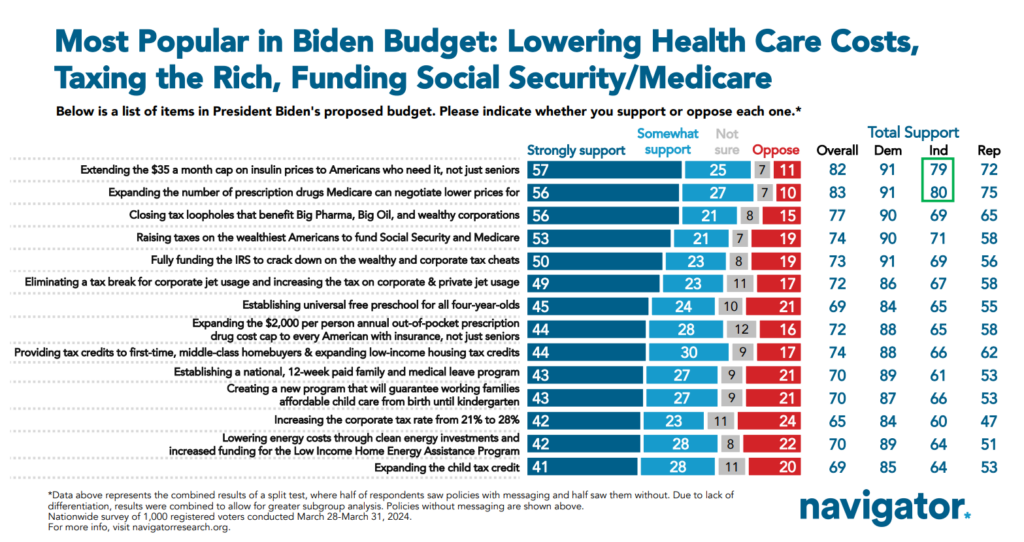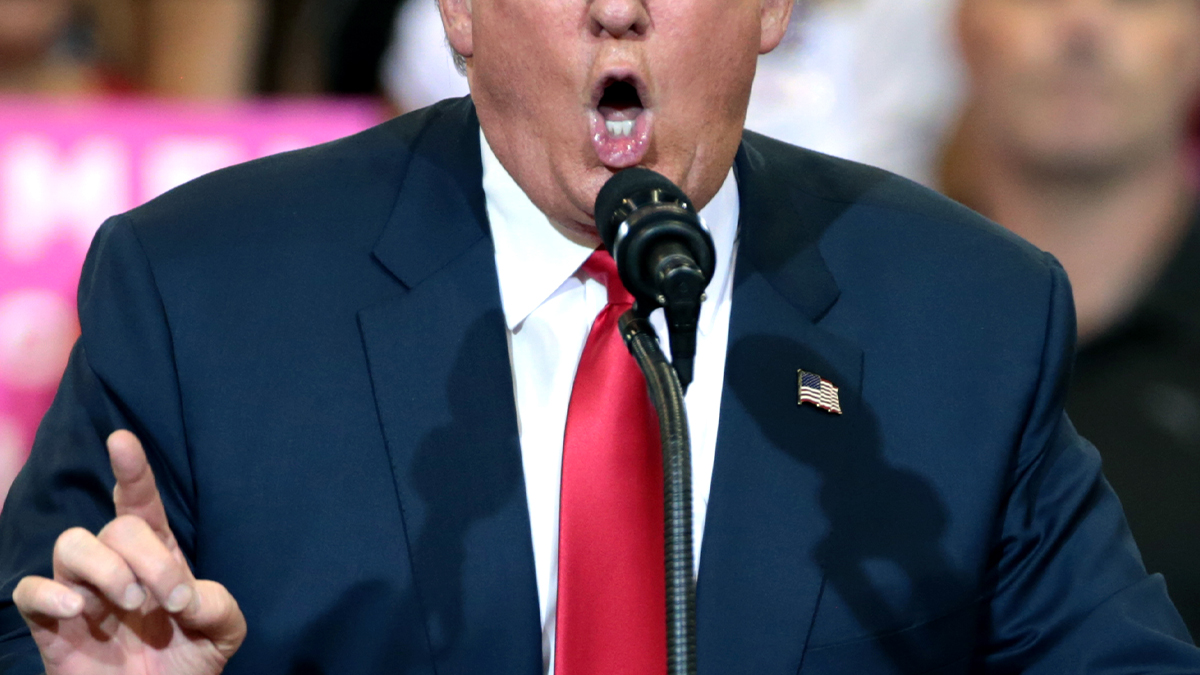President Biden and Senator Bernie Sanders joined forces at the White House Wednesday to celebrate the progress made on lowering drug costs on inhalers and insulin. At the event, Democratic leaders highlighted lower prescription drug savings for 27 million people across the country who have asthma. The vast majority of Americans will pay no more than $35 for an inhaler at the pharmacy thanks to the work of Democrats on the Senate Health, Education, Labor, and Pensions (HELP) Committee. Additionally, the Inflation Reduction Act capped seniors’ insulin costs at $35 per month, prompting some companies to extend these savings to the entire market. This marks the latest of Democratic achievements to rein in big drug company greed and lower prices for the American people.
President Biden also laid out a vision for the future of American health care, highlighting priorities to extend savings put in place by the Inflation Reduction Act to everyone. In addition to insulin caps, the landmark law caps seniors’ total out-of-pocket drug costs at $2,000 per year, stops price hikes outpacing inflation, makes vaccines available for free, and lowers premium costs for people purchasing coverage on their own. Right now, the Biden administration is negotiating with drug companies for lower prices under the Inflation Reduction Act’s Medicare Negotiation Program.
HEADLINES
Reuters: Biden, Senator Bernie Sanders Push Companies To Cut Cost Of Asthma Inhalers, Prescription Drugs. “President Joe Biden hosted a White House event with U.S. Senator Bernie Sanders on Wednesday to tout their fight against high prescription drug prices and push companies to cut the cost of inhalers for asthma sufferers. […] The Biden administration has sought to crack down on what it calls falsely claimed patents in an effort to increase competition to lower inhaler costs. The president also highlighted successful efforts included in 2022’s Inflation Reduction Act that placed a $35 cap on insulin. He also pushed to increase the number of Medicare drugs the federal government can negotiate with pharmaceutical companies from 10 to 50. Part of 2022’s Inflation Reduction Act allows Medicare to negotiate prices for prescription drugs that had been particularly expensive for the federal healthcare insurance program that covers millions of Americans aged 65 and older, as well as the disabled.” [Reuters, 4/3/24]
AP News: Biden And Sen. Bernie Sanders Join Forces To Promote Lower Health Care Costs, Including For Inhalers. “President Joe Biden teamed up with Sen. Bernie Sanders on Wednesday to promote his administration’s efforts to lower the cost of inhalers and other health care needs, as the White House continues its effort to highlight Biden’s legislative achievements to voters ahead of the November elections. […] Both men touted the lower health care costs that come through the Democrats’ sweeping climate, health care and tax package that Biden signed into law in 2022. It caps various health care costs for those on Medicare, including $35 a month for insulin and $2,000 a year for prescription drugs. No Republican lawmakers voted for the law.” [Associated Press, 4/3/24]
Spectrum News: Biden, Bernie Sanders Tout Efforts To Lower Health Care Costs After Inhaler Producers Announce Price Cap. “The president used the gathering to make the case that companies are using patents to hinder the ability for generic alternatives, that often cost less, to enter the market — a move he argues keeps prices high and stifles competition. The Biden administration recently has sought to crack down on the issue, with the Federal Trade Commission late last year announcing it was challenging more than 100 patents on inhalers, epinephrine autoinjectors and other products.” [Spectrum News, 4/3/24]
CBS News: Biden Touts Inhaler Price Drops With Bernie Sanders: “Finally, Finally We Beat Big Pharma.” “Sen. Bernie Sanders and President Biden joined forces Wednesday at the White House, championing the progress they’ve made on lowering the cost of inhalers and other expenses for Americans with asthma. Mr. Biden and Sanders also called on Congress and pharmaceutical companies to do more to curb prices. […] Americans pay more for prescription drugs than people in any other advanced company in the world, typically two to three times more, Mr. Biden and Sanders said. One company charges customers $9 for inhalers in Germany, and $286 in the U.S., Mr. Biden said — more than 30 times more. More than 27 million people in the U.S. suffer from asthma, according to the Asthma and Allergy Foundation of America.” [CBS News, 4/3/24]
ABC News: Bernie Sanders, Biden Share Plan To Cut ‘Outrageous’ Health Care Costs. “Among the accomplishments highlighted by Biden and Sanders were the Inflation Reduction Act provisions capping insulin costs at $35 for Medicare patients and out-of-pocket spending on brand-name drugs for Medicare beneficiaries to $2,000 yearly. They also touted the ability of Medicare, for the first time, to negotiate with pharmaceutical companies on the price of certain prescription drugs. […] Still, both Biden and Sanders said more work needs to be done. They advocated for expanding Medicare’s price negotiations to 50 drugs (the first 10 drugs subject to negotiations were unveiled last year) and for capping out-of-pocket costs for prescription drugs to $2,000 for all Americans.” [ABC News, 4/3/24]
The Hill: Biden, Sanders Tout Drug Pricing Action. “Sen. Bernie Sanders (I-Vt.) joined President Biden at the White House Wednesday to tout progress they’ve made at lowering drug costs, especially for common medicines like inhalers and insulin. […] Biden talked up his efforts to cap the costs of insulin at $35 a month for people on Medicare, as well as requiring drug companies to negotiate prices with Medicare for the first time ever. He credited Sanders with helping to shepherd drug pricing legislation through Congress. Earlier this year, Sanders and several Democratic colleagues criticized four major inhaler manufacturers — AstraZeneca, GSK, Teva Pharmaceuticals and Boehringer — for having significantly higher prices in the U.S. than elsewhere. Since then, one inhaler manufacturer has nixed patents, and three of the largest inhaler manufacturers said they plan to cap the cost of inhalers for many patients at $35 a month. Biden pledged to build on his current measures, including a shared goal with Sanders of capping health care costs at $2,000 annually for all Americans, not just those on Medicare.” [The Hill, 4/3/24]
The Washington Post: Bernie Sanders Joins Biden In Touting Lower Prescription Drug Costs. “Sen. Bernie Sanders (I-Vt.) joined President Biden on Wednesday to tout an initiative that Democrats believe will be key this election year: lowering the cost of prescription drugs. The event took place at the place at the [sic] White House, but the issue is one that Democrats hope will resonate on the campaign trail.” [The Washington Post, 4/3/24]
The Washington Times: Biden Enlists Bernie Sanders To Highlight Democratic-GOP Contrasts On Health Care. “‘We are sick and tired of paying, by far, the highest prices in the world for prescription drugs,’ Mr. Sanders said at the White House. ‘The Biden administration and Democrats in Congress are beginning to make some progress.’ Mr. Biden‘s marquee drug-price legislation offered seniors on Medicare a $2,000 annual cap on prescription costs and a $35 limit on monthly insulin in the Inflation Reduction Act. But Democrats want to grant the benefits to all Americans. The president also wants to let Medicare negotiate up to 50 drugs per year, an expansion of a signature program that will negotiate down the cost of at least 10 drugs starting in 2026 before expanding to 15 drugs and, incrementally, more drugs in successive years. ‘I think we should be more aggressive,’ Mr. Biden said. Mr. Biden and Mr. Sanders tried to draw a contrast with former President Donald Trump and his GOP allies. The Republican Study Committee, a major bloc of House Republicans, released a fiscal 2025 budget plan that would attack Obamacare and convert Medicare into a premium-support model. Mr. Biden said he is pushing to extend supersized subsidies that made Obamacare more popular and drove record signups, yet expire at the end of 2025.” [The Washington Times, 4/3/24]
CNN: Four Years After Being Rivals, Joe Biden And Bernie Sanders Partner To Push For Lower Prescription Drug Costs. “Sanders has long decried the high prices Americans pay for drugs, grilling pharmaceutical company executives and releasing a multitude of bills to bring down medication costs. He even led a caravan to Canada in 2019 to give people with diabetes access to less expensive insulin. Biden sought to align himself with the outspoken senator, saying Wednesday that the two have fought against high drug prices for 25 years and ‘beat Big Pharma finally.’ […] Trump has talked about dismantling the Affordable Care Act if he were to win a second term, even as the landmark health care law signed by President Barack Obama in 2010 has proven to be popular among most Americans, including Republicans. Both Biden and Sanders also called out congressional Republicans for voting against the Inflation Reduction Act in 2022, which gave Medicare the power to negotiate drug prices and capped the monthly cost of insulin at $35 and the annual out-of-pocket costs for drugs at $2,000 for Medicare enrollees. Biden also slammed Republicans on Capitol Hill for limiting the law’s provisions those [sic] covered by Medicare, rather than extending them to those with private insurance.” [CNN, 4/3/24]
USA Today: Biden Teams Up With Progressive Former Rival Bernie Sanders To Slam Trump Over Health Care. “President Joe Biden teamed up Wednesday with one-time political rival Bernie Sanders to hammer Republicans on prescription drug costs. The independent U.S. senator appeared with Biden at the White House for an event with healthcare advocates that focused on lowering the costs cost [sic] of inhalers to $35 a month, along with other Democratic efforts to expand access to health care. […] Biden sought to bring attention to actions he has taken with the help of congressional Democrats to lower prescription drug costs at the event with Sanders, who chairs the Senate Health, Education, Labor and Pensions Committee. The president is now pushing for a $2,000 cap on drug costs and $35 insulin for every American, not just seniors.” [USA Today, 4/3/24]
COMMENTARY
Senator Bernie Sanders (I-VT): “Earlier today, I went to the White House because @POTUS and I had some good news to share on the fight to lower prescription drug costs in this country. But let me be clear: The fight does not stop here.” [@SenSanders, X, 4/3/24]
Senator Tammy Baldwin (D-WI): “When I said I’d fight to lower health care costs for Wisconsin families, I meant it. I’m proud that after my investigation into the high cost of inhalers, three of the biggest inhaler manufacturers have capped their inhaler prices at $35/month!“ [@SenatorBaldwin, X, 4/3/24]
President Biden: “$35 a month insulin for seniors. $35 inhalers for asthma. $2,000 a year cap on prescription drugs for seniors starting next year. With Senator Sanders’ help, we’re showing how health care should be a right – not a privilege – in America.” [@POTUS, X, 4/3/24]
President Biden: “Inhalers cost less than $5 to make. But drug companies charge Americans up to $600 to increase their profits. My Administration has been cracking down on Big Pharma – and now, three of the four largest inhaler manufacturers are capping out-of-pocket costs at $35.” [@POTUS, X, 4/3/24]









